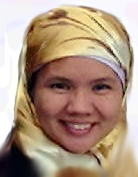Open High Schools: About time?
I'm copying here the position paper I wrote for UPOU about the proposed bills on the Open High School System (OHSS). What I dont know is really how this will interface with the BALS, however, as there was also two BALS bills discussed during the same meeting for the OHSS.
In all, my first Congress hearing was a terrible experience. My Dean reassures me that not all committees have useless chairmen, some are actually doing their jobs!
Having studied the proposed bills as requested, as well as other online material on the Open High Schools initiative, I would like to respectfully comment on the following points:
1. The OHSS Bill is a laudable effort, because, when done well, Open High Schools could address the problem of access to quality education for diverse clientele. The explanatory notes given by the proponents link the OHSS to the right to education, self-learning, use of alternative modes of instruction, greater employment opportunities, lessening the burden of overloaded classrooms, and decreasing drop out rates. However, no mention was given to its relationship to the Alternative Learning System (ALS), to the Basic Education Sector Reform Agenda (BESRA), to the existing Open High Schools already implemented by the DepEd, and to existing Open/Distance High School programs offered by private institutions.
2. There is a strong case for community linkage that may be tapped to include the rest of the community in the learning activities. These include the Local School Broad, the elders in the community, women’s organizations, and the like.
3. In HB 524, there is a provision for involving the University of the Philippines, such being a role of a National University. This will allow for the University, and specially the UP Open University, to lend its assistance in terms of preparation, research, training, and monitoring and evaluation, among other things. Similarly, local governments may partner with UP or other local universities for the same activities.
4. There are provisions for training of teaching staff. Non-teaching stakeholders (i.e., parents and local government), who are needed to provide support to the system, specially to the students, should also be mentioned.
5. There are provisions for guided instruction, blended learning, learning practical arts, and community and club involvement, with the presence of the Inang Paaralan, Guro, Gurong Tagapatnubay, Gurong Kadluan, and the Para Guro. In so doing, the OHSS can provide for student support in terms of academic support (tutorials and feedback) and psycho-social support (counseling, student community-building and extracurricular activities).
6. I have some reservations in the use of the term “Para Guro”.
7. There is a provision for the involvement of local and national telecommunication agencies. The Commission on ICT (CICT) should also be explicitly mentioned.
8. In HB 2343, there is a provision for the involvement of private educational institutions in putting up their own distance learning centers.
9. There are no mechanisms provided for the involvement of other stakeholders, such as NGOs, civic organizations, and other entities.
10. In Sec 14 (Curriculum), there is mention of youth offenders, and the necessity of consultation with psychiatrists and psychologists for needs-appropriate instruction. "Youth Offenders" imply that the children alone are at fault, and are thought of and treated as such, when in fact the whole social matrix is to some extent responsible for the misdemeanor. Thus, the better term is "Children in Conflict with the Law." On the other hand, pre-adolescent and adolescent children are at an interesting stage, with emerging psychological needs and a need to establish identities separate from family cultures. Thus, the provision of consultation with experts remains a good idea.
11. The language used in orientation and learning materials need to be appropriate for high school entrants and their parents. It is interesting to note that in the present Open High School Handbook (DepEd, 2008) the Independent Learning Readiness Test is phrased in academic English.
12. In HB 524, there is a provision of PhP 30 M for implementation of the program. While it is good that such an amount has been explicitly identified, the reason/basis for such an amount was not explained.
In closing, as a lifelong learner, distance education practitioner, and a homeschooling mother of four (one of whom has just finished grade school), I am very much excited about the prospect of an Open High School system. There is much that Distance Education as a whole can do both to challenge and complement the residential/conventional learning system, such as the establishment of collegial roles for faculty and student, changing the nature of assessments, the engagement of new and important life skills such as time and project management, initiative, a critical mindset, and technological skills, and the inculcation of a lifelong learning attitude for personal and community development. I am looking forward to being a part of such a project, both as an academic and as a parent.
Some of my notes from the hearing:
Open Learning Systems is a different matter from the distance learning mode of delivery.
1. Are we reaching the students we want to reach? Are there any studies on the 30 schools?
Action: next meeting will invite heads of these schools.
2. UPOU’s comments were received positively.
3. Start defining formal and nonformal education sector


0 Comments:
Post a Comment
Subscribe to Post Comments [Atom]
<< Home